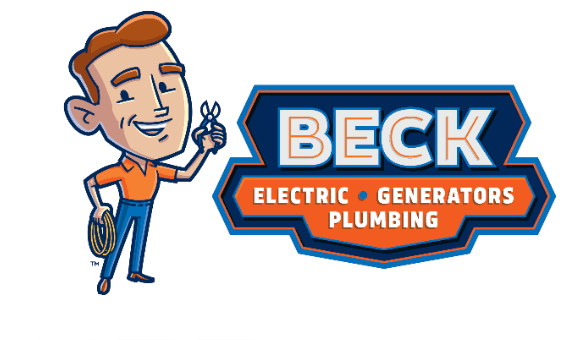Residential fires cause more than 2,000 deaths in the US each year. Some of these deaths occur simply because people get trapped inside by the fire, while many others are a result of fatal carbon monoxide poisoning due to smoke inhalation. Having smoke alarms in various places in your home is your best line of defense since it will alert you if a fire starts inside your home. In this article, we’ll explain where you should have smoke alarms in your home and also discuss which type of alarms offer the best protection.
Recommended Smoke Alarm Placement
As with most other places, the building codes in Ohio stipulate that residential buildings must have smoke alarms in certain locations. These requirements are only for new home construction, when renovating certain areas of a home such as bedrooms or when putting an addition on a home. Nonetheless, they serve as a good guideline that you should make sure to follow in an existing home as well.
The first stipulation is that you must have one smoke alarm on each floor of the house. The only exception is if you have a split-level home where there isn’t a full story between the upper level and the floor below. In this case, one alarm on the upper floor will be sufficient to cover the floor below as long as there isn’t a door between the two floors that can be closed.
The most important rule is that you should have one smoke alarm inside every bedroom as well as an additional alarm in the hallway outside each bedroom area. This is to ensure that everyone in the household gets woken up should a fire occur overnight. Building codes only require one smoke alarm per floor. Nonetheless, larger homes are sometimes better off having an additional alarm on each floor, such as in the living room, dining room or kitchen. Cooking is one of the biggest sources of residential fires, which is why most experts recommend having a detector in the kitchen or at least nearby. However, you typically don’t want this alarm to be too close to your stove and oven or else you may end up frequently setting it off.
All smoke alarms in a home should be mounted directly on the ceiling or high up on the wall. If putting the alarm on the ceiling, the best location for it depends on the type of ceiling. For rooms with a flat ceiling, you always want the alarm as close to the center of the room as possible. However, if the room has a ceiling fan, the alarm should be placed at least 36 inches away from the fan. For rooms with a sloped ceiling or where the ceiling slopes down from the wall, you should place the alarm a minimum of 4 inches down from the peak or where the ceiling meets the wall.
Where you should never place a smoke alarm is on the ceiling in any of the corners of a room. The reason is that the top corners of a room don’t always have as good of circulation, which can increase the amount of time it takes for the alarm to detect the presence of smoke in the event of a fire.
Types of Smoke Alarms
There are two primary types of smoke alarms that each detect the presence of smoke differently. Ionization smoke alarms contain a small (and safe) amount of radioactive material and two electrodes—one positively charged and the other negatively charged. The radioactive material ionizes the air flowing between the electrodes. The particles in smoke are negatively charged carbon molecules. When these smoke particles float between the two electrodes, the electrodes sense their negative charge and trigger the alarm to go off.
Photoelectric smoke alarms have a small light that continually shines onto a light sensor. What happens when smoke particles are present is that they interfere with the light and block some of the rays so that they don’t shine onto the sensor, which triggers the alarm to go off. This type of smoke alarm is much more effective at detecting larger smoke particles such as those that result from smoldering fires. Ionization alarms, on the other hand, are more effective at detecting smaller smoke particles caused by flames, such as those from grease fires.
For the best protection, you should always make sure to have both types of smoke alarms on each floor of your home or choose dual alarms that use both types of detection technology. The general recommendation is that you have should photoelectric alarms in each bedroom and out in the hallway near all of your bedrooms. Photoelectric alarms are also recommended for living rooms and other places where furniture could catch fire and smolder. The best place to put ionization alarms is where there is a higher risk of actual flames such as from a grease fire in the kitchen.
Why Hardwired Smoke Alarms Are the Best Choice
Building regulations require that smoke alarms in all new homes use the building’s electrical system as their main power source. You’re allowed to use battery-powered smoke alarms in an existing building, but installing hardwired alarms is still the safer and better choice. One reason is that many battery-powered alarms work independently, whereas alarms that are hardwired to your electrical system are all interconnected. With hardwired interconnected alarms, every alarm in the house will immediately go off as soon as one alarm detects the presence of smoke. That means you’ll instantly know if a fire starts so you can get out of the house before you get trapped and/or potentially get put at risk of fatal carbon monoxide poisoning. If a major fire occurs in your house and your room starts filling with smoke, it sometimes only takes a few minutes before you may go unconscious as a result of carbon monoxide exposure.
The issue if your smoke alarms aren’t interconnected is that you may not always hear an alarm on a different floor or the other side of the house going off. This can happen with alarms that don’t communicate with each other, but battery-powered ones can also become desynced. Either way, it can take some time before the smoke spreads far enough to set off the alarms nearest you. That means you could end up finding yourself trapped by the time you finally realize there’s a fire in your house. This issue is why building codes require the use of interconnected smoke alarms in new buildings and also to install them when renovating bedrooms or adding additional bedrooms.
The biggest benefit of hardwired smoke alarms is that they also have batteries that function as a failsafe. A fire can potentially knock out your electricity, but the batteries in each alarm will ensure they still go off. To put it more simply, the odds of your power being out and batteries in every smoke alarm in your house also being dead is almost zero.
Since 2007, Beck Electric, Generators & Plumbing has been providing top-notch electrical services in Canton, Stark County and throughout Northeast Ohio. We’re dedicated to helping our customers expertly handle all of their home’s electrical needs. Whether you need to install smoke detectors, new lighting, a whole-home generator, an EV charging station or any other electrical device or fixture, you can trust our team to do the work properly. We can also assist if you need any electrical repairs or any plumbing services. To learn more about how we can handle your electrical and plumbing needs, contact us today.






